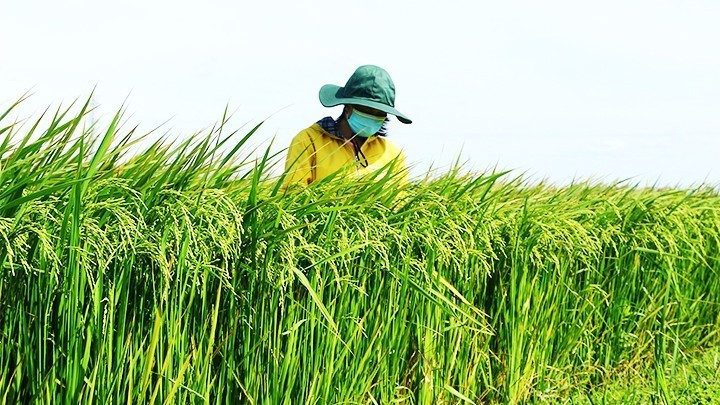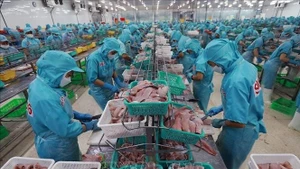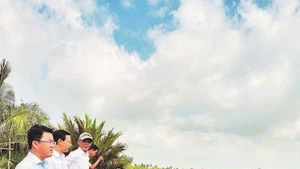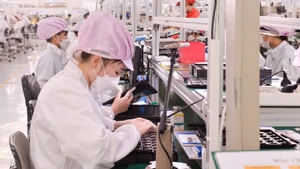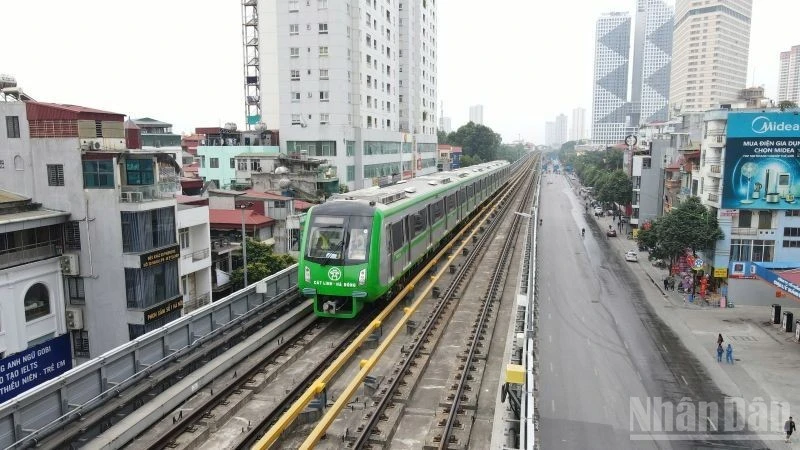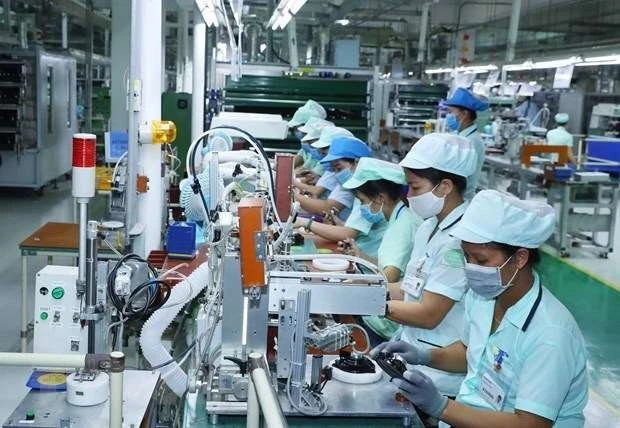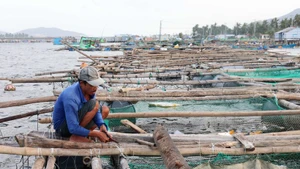Perfecting institutions and increasing capacity to promote green production
Developing green value chains is an inevitable trend in the process of agriculture transformation towards modernity, efficiency, and sustainability. Not only contributing to reducing emissions and protecting the environment, green value chains also create a foundation to increase the added value for agricultural products, build national brands, and increase the competitiveness of Vietnamese products in the international market, where quality standards are increasingly high.
Dr. Dao Xuan Hung, Editor-in-Chief of Agriculture and Environment Magazine, affirmed that regional linkage plays an especially important role in this process. The formation of concentrated, synchronised raw-material zones will promote deep processing, optimise logistics, and reduce post-harvest losses, thereby practically contributing to low-emission agricultural production. At the same time, the standardisation of production processes and traceability systems will expand opportunities for entering demanding markets that prioritise sustainable products.
To achieve these goals, Dr. Hung stressed the need for close coordination between the state, enterprises, scientists, cooperatives, and farmers, together with the promotion of technological transfer, improvement of regional linkage mechanisms, and encouragement of innovation.
Sharing the same view, Dr. Tran Cong Thang, Head of the Institute of Strategy and Policy on Agriculture and Environment, stated that green value chains cover the entire process — from production, harvesting, processing, transport, distribution, consumption to waste treatment — in the direction of reducing environmental impact, saving resources, and low emissions, while ensuring sustainable livelihoods for farmers.
He reiterated national commitments such as targets of Net-zero 2050; the Green Growth Strategy; the Sustainable Agriculture and Rural Development Strategy to 2030 with a vision to 2050; the circular economy project; and the one-million-hectare high-quality, low-emission rice project, all aiming towards the common goal of green production.
However, Dr. Thang pointed out limitations: linkages remain small-scale; only a limited number of farmers, enterprises, and cooperatives participate; many linkage models lack sustainability, with partners changing year by year; and contracts often lack binding mechanisms. These are major barriers preventing green value chains from realising their full potential.

According to Assoc. Prof. Dr. Pham Thi Thanh Nga, Head of the Institute of Hydrology and Meteorology Science and Climate Change, climate change has increasingly strong impacts and spreads across regional space, requiring localities to strengthen regional linkage based on common data and interconnected planning according to basin-ecology. Regional linkages help optimise land–water–climate resources, forming large raw-material areas, strengthening green supply chains, and improving the competitiveness of Vietnamese agricultural products.
She emphasised that regional linkages are also the basis for proactive climate risk management through integrating maps of drought, salinity intrusion, and flooding, as well as climate-risk maps, into socio-economic development decisions. This is an important requirement for maintaining food security, ensuring sustainable development, and meeting international climate commitments.
Representatives of the Viet Nam Cooperative Alliance proposed a system of solutions to support green cooperatives, especially completing the legal framework guiding the Cooperative Law 2023 to ensure that all eight groups of support policies are implemented in practice. In addition, there is a need for strengthening training in enterprise governance, contract negotiation skills, marketing, and financial management for cooperative leaders, while enhancing technical knowledge, advanced cultivation skills, and cooperative economic thinking for farmers.
At the macro level, policies should shift from short-term support to long-term and conditional investment aimed at building a sustainable ecosystem for cooperatives.
Deputy Minister of Agriculture and Environment Phung Duc Tien emphasised the need to raise farmers’ awareness of international competition and increasingly high standards of markets. The ministry will promote regional connectivity strategies and develop comprehensive cooperation models based on the central roles of farmers, enterprises, scientists, and local authorities. At the same time, it will focus on traceability, food safety, international standard certification, and technology transfer.
According to Deputy Minister Phung Duc Tien, green value chain development is not only the responsibility of the agricultural sector but of the whole society. Only when all stakeholders participate can the agricultural production ecosystem fundamentally transform towards sustainable value.
Two key pillars for green agriculture development
To promote green production chains, Dr. Tran Cong Thang said that it is necessary to develop a generation of professional farmers who master green production processes and meet requirements for traceability and international certification. Through cooperatives as core units, professional farmer groups will accompany enterprises in developing markets, increasing added value, reducing risks, and improving rural living standards.
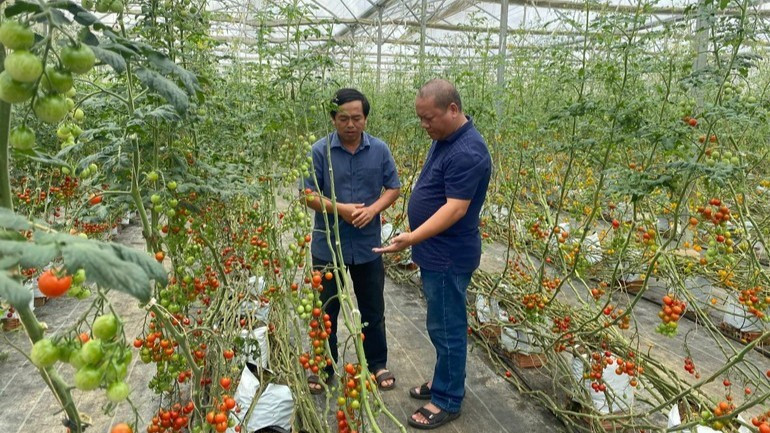
Assoc. Prof. Dr. Pham Anh Tuan, Head of the Viet Nam Institute of Agricultural Engineering and Post-Harvest Technology, said that there are now many advanced technologies for processing agricultural products, including ultra-fast liquid freezing technology, comparable to that of Japan, now applied in the seafood sector and expanding to livestock products. However, the development potential is still significant.
He proposed production area planning according to natural advantages, developing raw-material regions associated with local specialities; linking production areas–processing–consumption along the value chain to avoid product overlap and reduce intra-regional competition; and synchronising green logistics infrastructure and packaging centres.
In terms of production organisation, it needs to develop new-style cooperatives as intermediaries between farmers and enterprises, ensuring quality control and product collection; encouraging enterprises to lead value chains through product purchase, technical transfer, and smart contract application.
Dr. Pham Anh Tuan also stressed the importance of applying green standards such as VietGAP, GlobalGAP, and organic production; intensifying mechanisation and digitalisation through automated irrigation systems, environmental sensors, electronic farm diaries, and QR/Blockchain-based traceability. Meanwhile, he highlighted the need for developing advanced processing technologies, such as freeze-drying, freeze-drying, and essential oil extraction; building regional brands and standardising quality under geographical indications; and supporting enterprises in participating in international trade fairs and cross-border e-commerce.
From the perspective of state management, Dr. Pham Anh Tuan recommended strengthening the role of regional coordination in production–consumption; building a national agricultural data system connecting farmers to markets; and perfecting green credit policies, technology-innovation support, and agricultural insurance.
